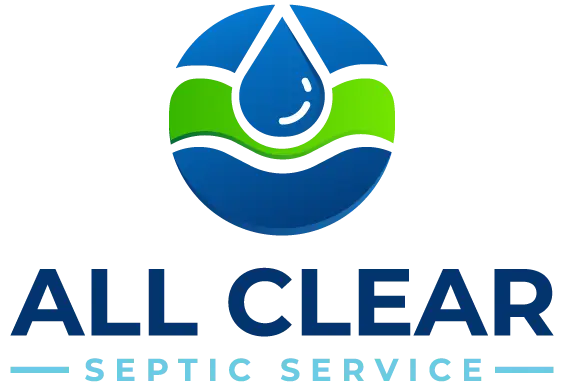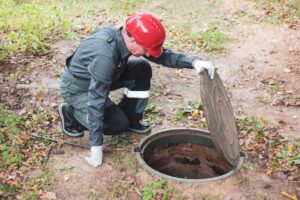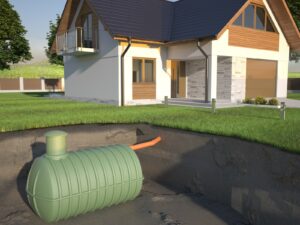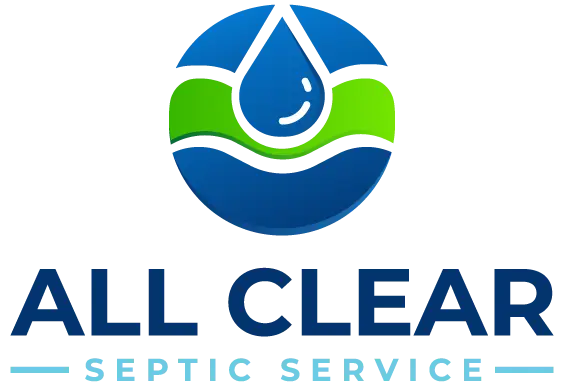(North Whidbey | South Whidbey | Camano Island)
If your home relies on a septic system, you need to understand how it works. A properly maintained septic system can last decades, but neglect it, and you could be looking at expensive repairs or worse, a full system failure.
Whether you’re in North Whidbey, South Whidbey, or Camano Island, your septic system follows the same process: wastewater enters a septic tank, solids settle, and treated water (effluent) moves to a drain field, where natural filtration happens before the water returns to the environment.
Let’s break it down, step by step.
The Septic Tank: The First Line of Wastewater Treatment
Every time you flush, wash dishes, or take a shower, wastewater flows through pipes and enters the septic tank, a watertight underground container. Inside the tank, separation happens naturally
- Solids (sludge) sink to the bottom. These are heavier materials like human waste and food particles.
- Fats, oils, and grease (scum) float to the top. These can slow down the system if they build up too much.
- Liquid wastewater (effluent) stays in the middle. This is what moves onto the next stage of treatment.
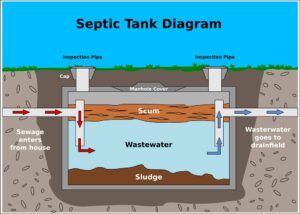
A properly functioning tank relies on anaerobic bacteria microorganisms that live without oxygen to break down solid waste. Over time, these bacteria digest organic material, reducing sludge buildup.
But not everything breaks down completely. That’s why septic systems should be pumped when sludge reaches 1/3 of the total tank volume to prevent solids from reaching the drain field. This can be determined during an inspection using a core sample.
The Drain Field: Where Wastewater Gets Its Final Treatment
Once wastewater leaves the tank, it flows into the drain field (also called a leach field). This is a network of perforated pipes buried in gravel or sand, which allows effluent to disperse evenly into the surrounding soil.
Here’s what happens in the drain field:
- Effluent seeps out through the holes in the pipes and moves into the surrounding gravel.
- Aerobic bacteria in the soil break down remaining waste. Unlike the bacteria in the septic tank, these bacteria require oxygen to function.
- The soil filters out contaminants. By the time the water reaches groundwater, harmful bacteria and organic matter have been removed.
If the drain field becomes clogged or overloaded with wastewater, it can no longer absorb liquid properly. That’s when backups happen inside your home, in your yard, or both.
Why Septic Systems in Whidbey & Camano Island Need Special Attention
Septic systems all work the same way, but local conditions impact their efficiency and safety.
North Whidbey
- Standard septic systems are common here, but soil drainage is critical. If the soil doesn’t absorb wastewater properly, it can cause pooling water or backups.
- Regular inspections help ensure the drain field is functioning correctly.
South Whidbey
- High groundwater levels make proper drainage more difficult. If wastewater doesn’t have enough room to filter through the soil, it can contaminate groundwater.
- In areas with poor drainage, a mound system (an elevated drain field) might be necessary.
Camano Island
- Soil type varies, and in some areas, natural filtration isn’t sufficient to break down waste.
- Systems in these areas may need larger drain fields or additional filtration measures to prevent contamination.
If you live in any of these areas, routine inspections are important to keep your system working properly. Schedule one here: Septic Inspection.
Common Septic System Problems and How to Avoid Them
A well maintained system shouldn’t cause problems, but ignoring maintenance can lead to major failures.
1. Slow Drains and Backups
If water drains slowly from sinks, showers, or toilets, it could mean:
- Your septic tank is full and needs pumping.
- The drain field is clogged and isn’t absorbing water properly.
- Pipes leading to the septic system are blocked.
2. Strong Odors Inside or Outside the Home
A properly working septic system shouldn’t smell bad. If you notice a sewage odor
- Waste inside the tank isn’t breaking down properly.
- Your drain field isn’t filtering effluent correctly.
- There’s a leak in your system.
3. Standing Water or Muddy Soil Around the Drain Field
If wastewater isn’t draining properly, it can start to surface in your yard. Causes include:
- A clogged or failing drain field.
- Excessive water use overloading the system.
- Soil that isn’t absorbing effluent properly.
4. Septic Alarm Going Off
If your septic system has an alarm, don’t ignore it. It’s a warning that something’s wrong. Common causes include:
- High water levels in the tank.
- Pump failure.
- Blockages prevent wastewater from flowing properly.
If your septic alarm is sounding, get help immediately: Septic Alarm Solutions.
How to Keep Your Septic System Running Efficiently
Septic system failures aren’t just expensive. They can make your home unlivable. These steps help prevent costly repairs and extend your system’s lifespan.
1. Educate Yourself
The first line of defense against septic system failures is an informed homeowner. Using your system improperly can cause major issues very quickly. Learn what can and can’t go into your system, how often it should be inspected, and what signs indicate a problem.
2. Use Water Wisely
Excess water overwhelms your septic system, making it less effective. Spread out laundry loads, fix leaks, and avoid running multiple large appliances at once.
3. Only Flush What Belongs
Your septic system isn’t a garbage disposal. Never flush:
- Wipes (even if they say “flushable”)
- Grease and cooking oils
- Chemicals and medications
- Feminine hygiene products
4. Get Regular Inspections
Inspections help catch small problems before they turn into big ones. If your system hasn’t been checked in a while, schedule an inspection now: Septic Inspection Services.
5. Pump Your System If Recommended by Inspection
Your system should only be pumped when sludge reaches 1/3 of the tank’s total volume. This prevents solids from reaching your drain field, which could cause irreversible damage.
Not All Septic Systems Work the Same Way
While most septic systems follow this general process, some homes have more advanced systems that treat wastewater to higher environmental standards. These require additional maintenance and may be more expensive but are essential in areas with strict environmental regulations. If you’re unsure what type of system you have, an inspection can help determine its needs.
Don’t Wait for a Septic Emergency. Get an Inspection Today
Septic problems don’t fix themselves. If you’ve noticed slow drains, sewage smells, or standing water, waiting will only make it worse.
📍 We serve North Whidbey, South Whidbey, and Camano Island.
📅 Book your inspection today: Schedule Now.
Keeping your septic system in top shape isn’t complicated. It just takes the right care at the right time. Act now, and avoid costly repairs later.
